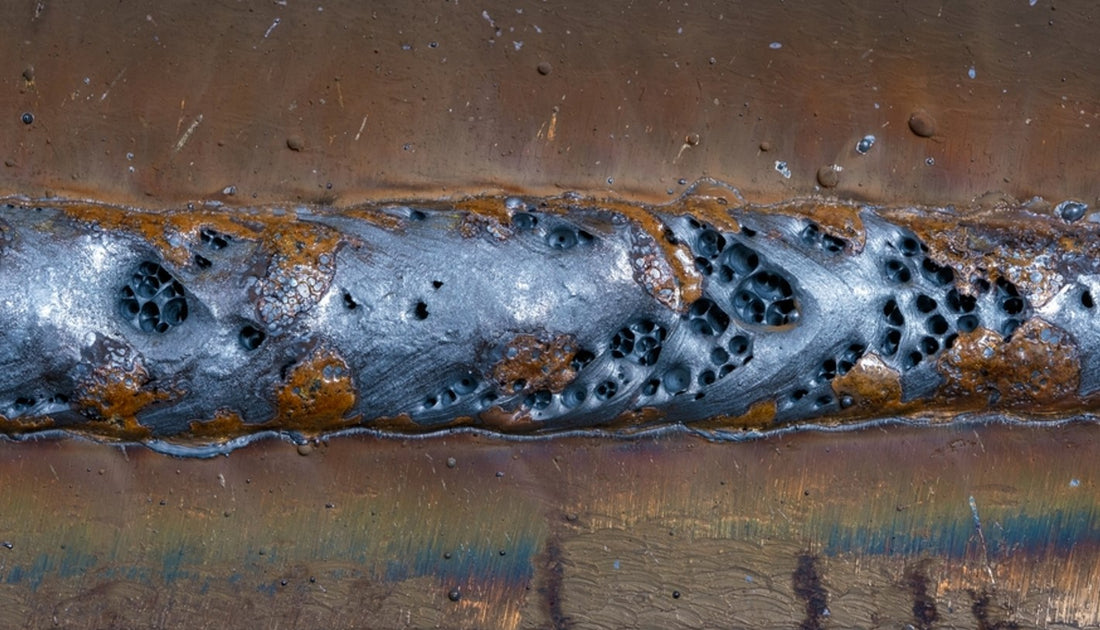What is Porosity in Welding: Understanding Its Reasons and Enhancing Your Abilities
What is Porosity in Welding: Understanding Its Reasons and Enhancing Your Abilities
Blog Article
Porosity in Welding: Identifying Common Issues and Implementing Best Practices for Prevention
Porosity in welding is a prevalent concern that typically goes undetected until it creates considerable issues with the honesty of welds. In this discussion, we will check out the vital elements adding to porosity formation, examine its destructive results on weld efficiency, and review the ideal practices that can be taken on to minimize porosity event in welding processes.
Common Reasons For Porosity

One more regular wrongdoer behind porosity is the visibility of impurities externally of the base metal, such as oil, grease, or rust. When these contaminants are not efficiently eliminated before welding, they can evaporate and end up being caught in the weld, triggering flaws. In addition, making use of unclean or damp filler products can introduce pollutants into the weld, adding to porosity problems. To mitigate these usual root causes of porosity, complete cleansing of base steels, proper securing gas choice, and adherence to optimum welding specifications are necessary techniques in attaining top notch, porosity-free welds.
Impact of Porosity on Weld Top Quality

The visibility of porosity in welding can substantially compromise the architectural stability and mechanical buildings of welded joints. Porosity creates spaces within the weld metal, deteriorating its overall toughness and load-bearing capacity. These gaps serve as stress and anxiety concentration points, making the weld more prone to cracking and failing under used tons. In addition, porosity can decrease the weld's resistance to deterioration and other environmental variables, even more lessening its durability and efficiency.
Among the primary repercussions of porosity is a reduction in the weld's ductility and sturdiness. Welds with high porosity levels tend to exhibit lower effect toughness and reduced ability to deform plastically prior to fracturing. This can be specifically worrying in applications where the bonded components go through dynamic or cyclic loading problems. Porosity can hinder the weld's ability to effectively transmit forces, leading to premature weld failure and prospective safety and security hazards in crucial structures. check What is Porosity.
Best Practices for Porosity Avoidance
To boost the architectural stability and high quality of welded joints, what specific measures can be implemented to decrease the event of porosity during the welding process? Porosity avoidance in welding is critical to make sure the stability and strength of the last weld. One reliable method is appropriate Resources cleaning of the base steel, eliminating any impurities such as rust, oil, paint, or dampness that might result in gas entrapment. Guaranteeing that the welding tools remains in good problem, with clean consumables and appropriate gas circulation rates, can also significantly minimize porosity. Additionally, keeping a steady arc and controlling the welding specifications, such as voltage, current, and travel speed, assists create a constant weld pool that lessens the risk of gas entrapment. Utilizing the correct welding method for the specific product being bonded, such as changing the welding angle and weapon position, can better avoid porosity. Normal evaluation of welds and prompt remediation of any type of concerns identified throughout the welding procedure are vital techniques to avoid porosity and create high-quality welds.
Value of Appropriate Welding Strategies
Implementing correct welding methods is critical in ensuring the architectural integrity and top quality of welded joints, building upon the structure of effective porosity avoidance steps. Extreme heat can lead to enhanced porosity due to the entrapment of gases in the weld pool. Furthermore, using the ideal welding specifications, such as voltage, existing, and travel rate, is important for achieving sound welds with marginal porosity.
Moreover, the choice of welding process, whether it be MIG, TIG, or stick welding, must straighten with the specific needs of the job to ensure ideal outcomes. Correct cleaning and preparation of the base steel, as well as choosing the right filler material, are additionally necessary components of efficient welding techniques. By adhering to these ideal practices, welders can reduce the threat of porosity formation and generate high-quality, structurally sound welds.

Checking and High Quality Control Steps
Evaluating procedures are go to this site necessary to identify and protect against porosity in welding, ensuring the strength and resilience of the final product. Non-destructive testing methods such as ultrasonic testing, radiographic testing, and visual examination are generally used to recognize possible issues like porosity.
Post-weld examinations, on the other hand, examine the final weld for any type of defects, including porosity, and validate that it meets defined standards. Executing a thorough quality control strategy that consists of extensive screening procedures and evaluations is extremely important to decreasing porosity concerns and ensuring the general top quality of welded joints.
Conclusion
To conclude, porosity in welding can be an usual issue that affects the high quality of welds. By recognizing the common causes of porosity and executing finest techniques for avoidance, such as proper welding methods and screening actions, welders can ensure premium quality and reputable welds. It is crucial to focus on avoidance methods to minimize the incident of porosity and preserve the stability of welded structures.
Report this page